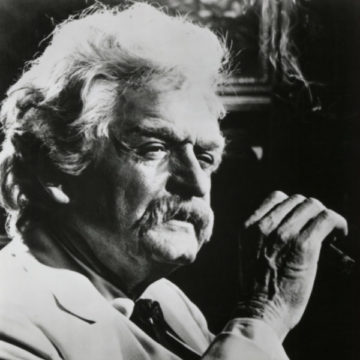by Thomas Larson

Samuel Langhorne Clemens, among the greatest and most widely read authors in history, is known everywhere by his pen name, Mark Twain. This was the nom de plume Clemens adopted in 1863 as a frontier columnist for The Virginian, a Nevada newspaper. There, he wrote satires and caricatures, bald hoaxes (fake news) and ironic stories of the wild pioneers he met and whose tales he embellished even further. His writerly persona came alive when he began lecturing and yarn spinning from a podium. Over time, his lowkey delivery, his deft timing, coupled with the wizened bumptiousness of a country orator in a white linen suit, captivated audiences in America and Europe, and on world tours. No one has embodied America, in its feral enthusiasms and its institutional hypocrisies, better than Clemens. Dying at 74 in 1910, he played Twain—rather, he became him—for 47 years.
In the early 1950s, a young actor from Cleveland, Ohio, Hal Holbrook, adopted the Twain persona for a stage act, aping the man’s appearance and cornpone speech and dipping into the goldmine of material—raucous tales to tell and witty saws to quip. Examples of the latter: “Dying man couldn’t make up his mind which place to go to—both had their advantages: Heaven for climate, Hell for company.” “Faith is believin’ what you know ain’t so.”
Holbrook developed the act before psychiatric patients, school kids, and Rotarians in the Midwest, then launched a polished performance in 1954 as “Mark Twain Tonight!” The stage: Lock Haven State Teachers College in Pennsylvania. Within a few years, he was on “The Ed Sullivan Show” and “The Tonight Show.” He debuted Off-Broadway in 1959, the show hitting Broadway in 1966 when Holbrook won a Tony. He went on to play Clemens’s Twain more than 2000 times from 1954 to 2017 when he retired the act. A record, no doubt, for a single role: 63 years, a decade and a half longer than Clemens himself played Twain. Read more »
